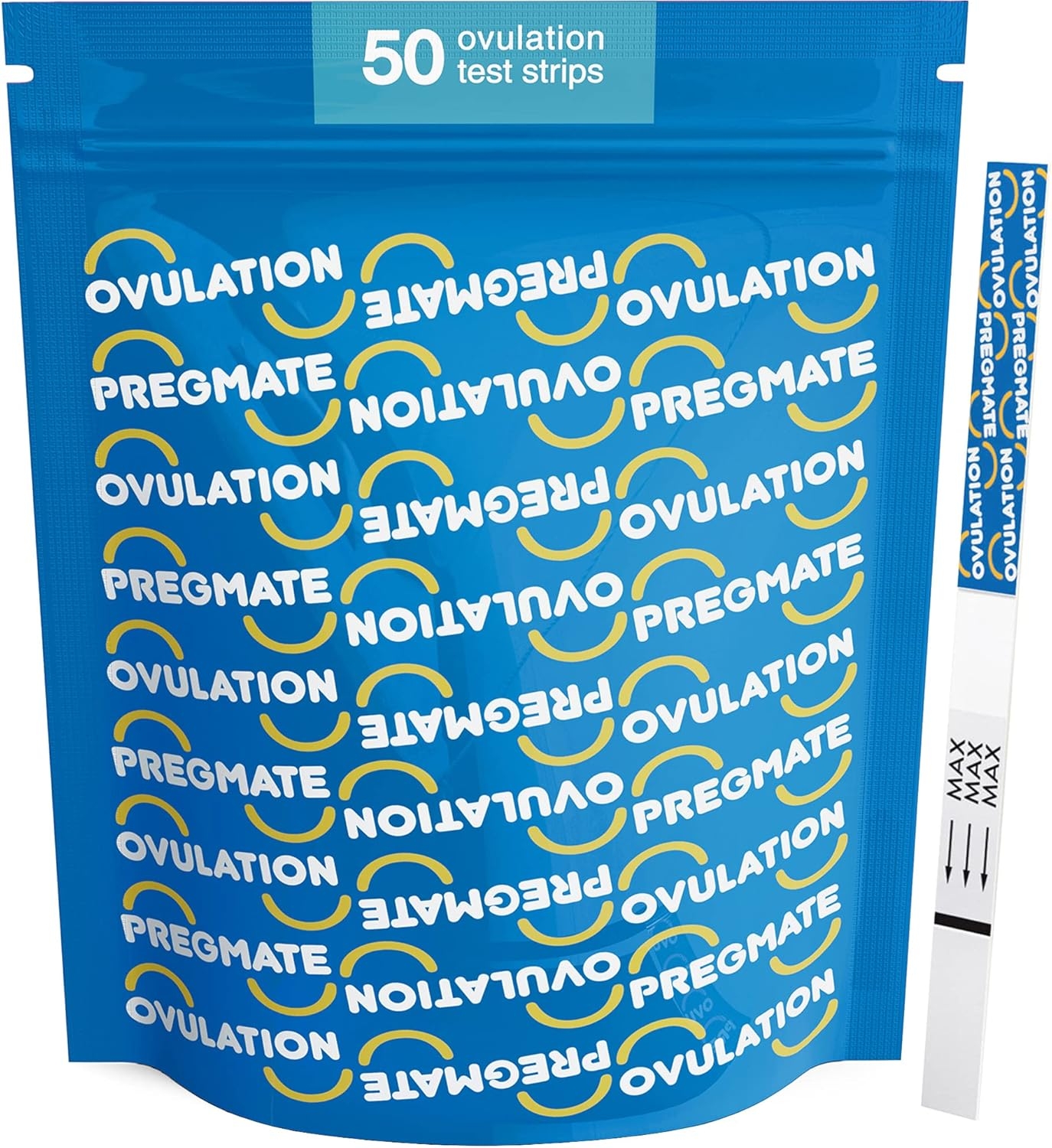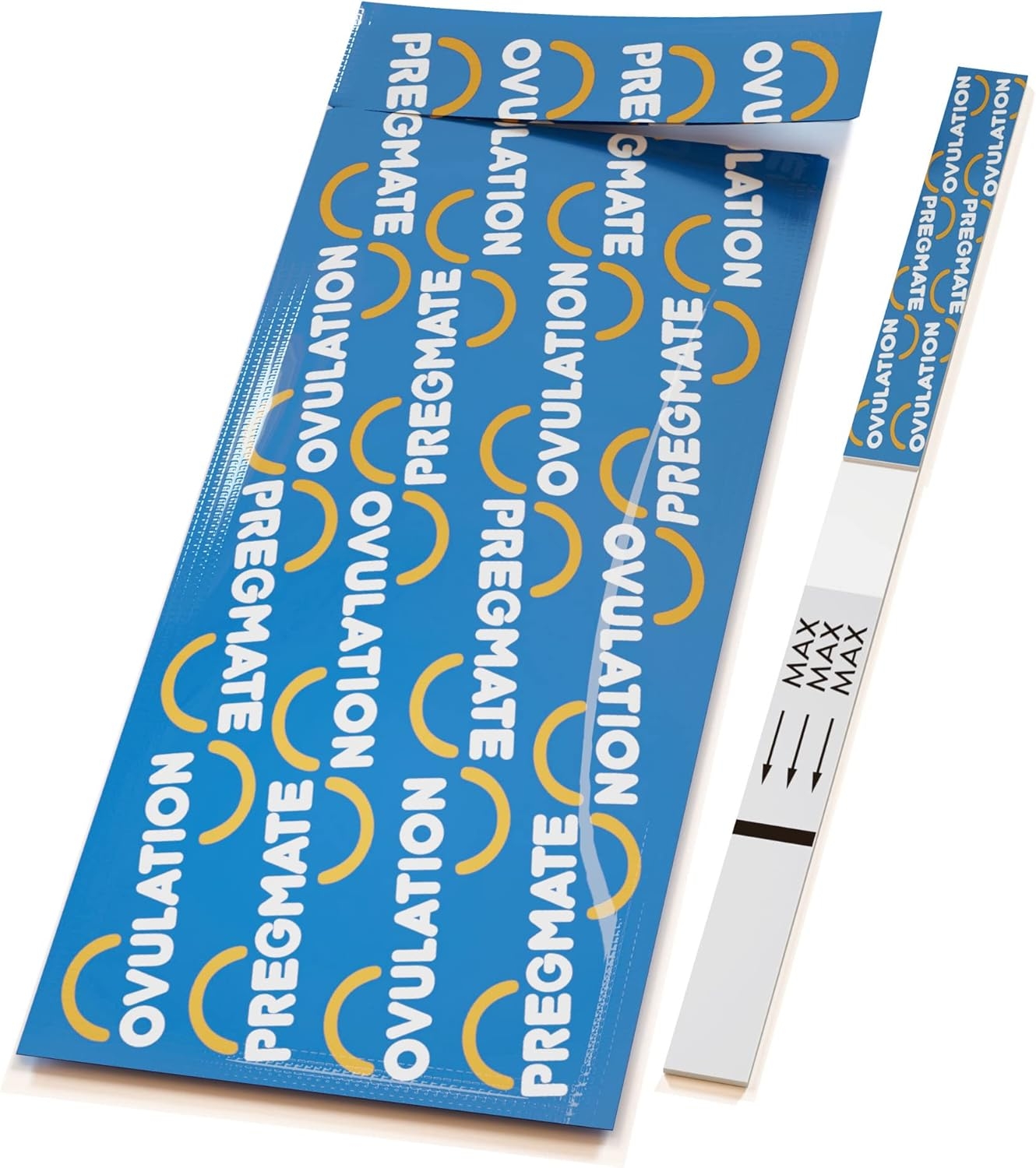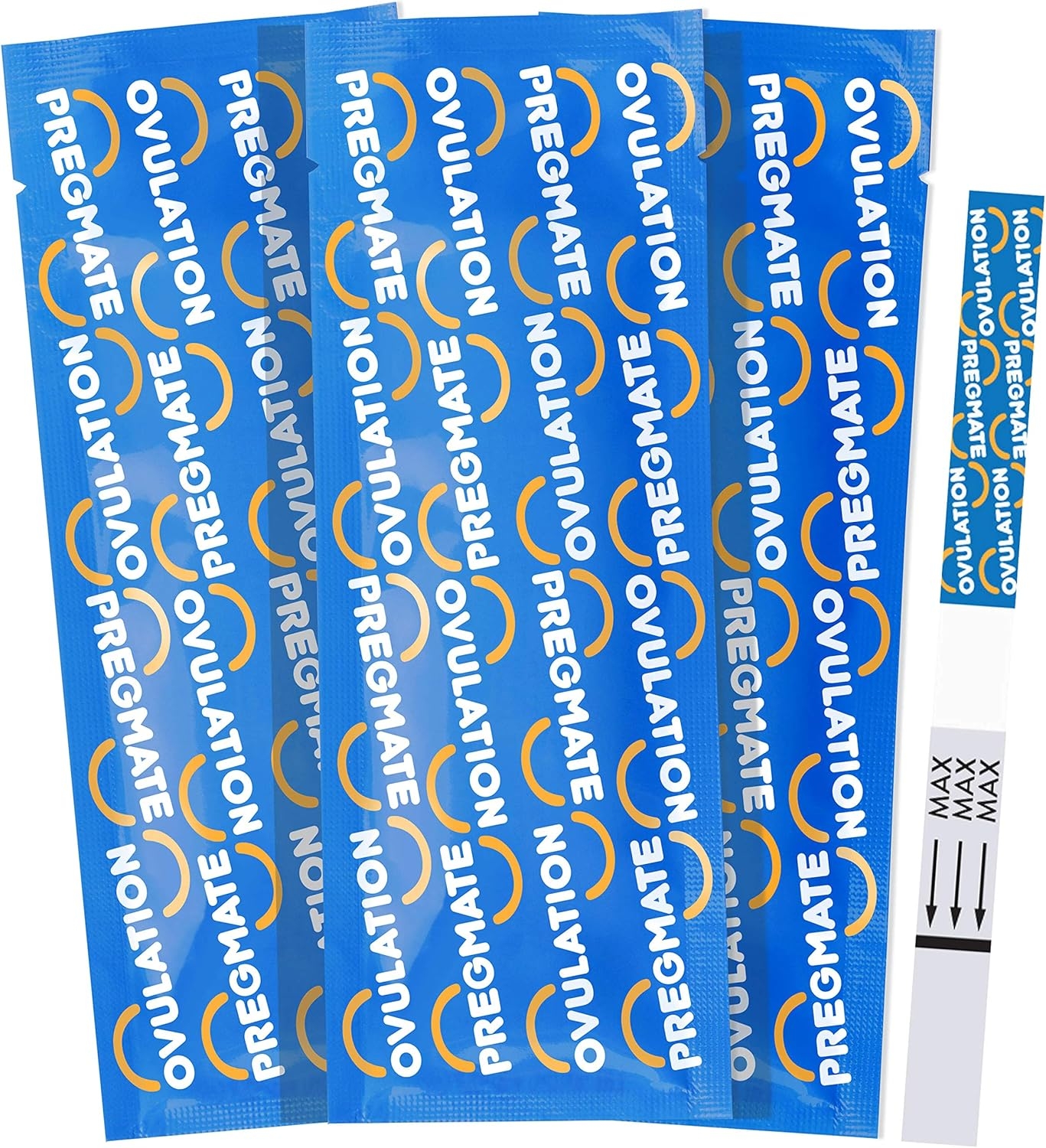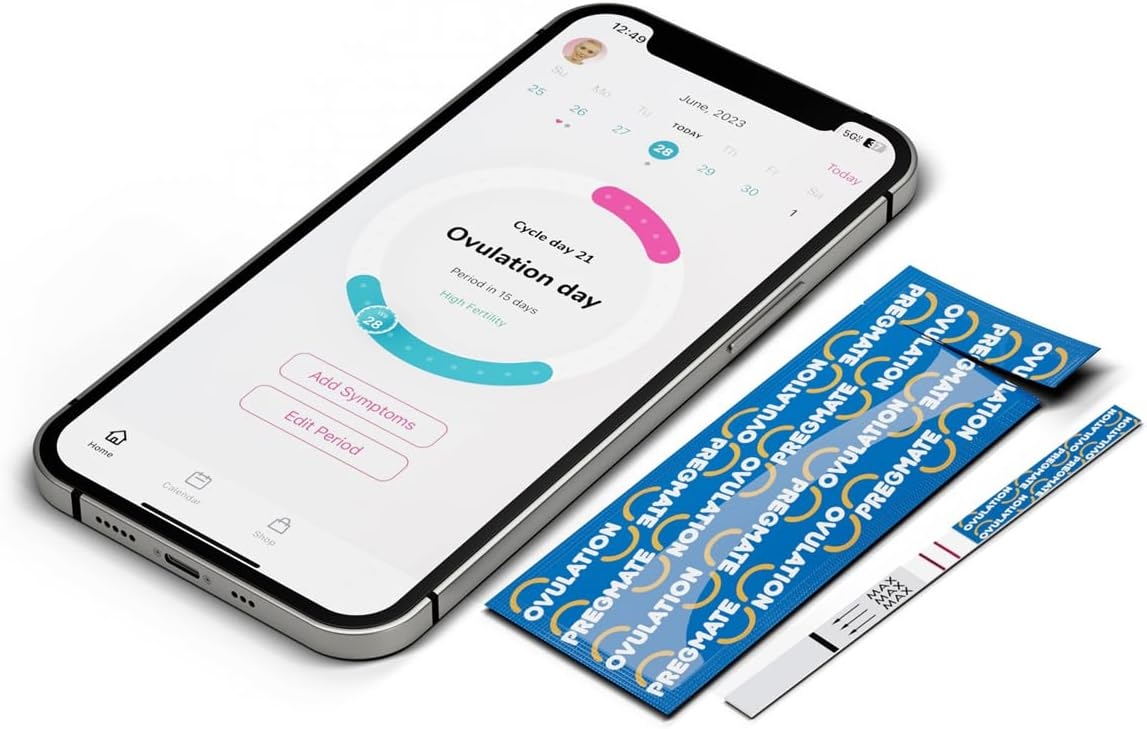- Accurate and reliable ovulation tests
- Sensitivity level – 25 miu/ml
- Determine your most fertile days
- Over 99% accurate at detecting your LH surge
- Identify the best time to conceive







From the brand

Family planning tests
Determine your most fertile days
Predict your fertility window
Confirm pregnancy early and quickly
-

Effortlessly track your menstrual cycle, get ovulation predictions, and monitor essential body symptoms.
-




-

Identify the best time to conceive with Pregmate ovulation tests
-




-

Confirm pregnancy early and quickly with Pregmate pregnancy tests
-




Product Description
 Maximize your chance of pregnancy with accurate ovulation prediction. Identify the best time to conceive. Get pregnant faster.
Maximize your chance of pregnancy with accurate ovulation prediction. Identify the best time to conceive. Get pregnant faster.

Determine your most fertile days
Pregmate ovulation tests detect levels of Luteinizing Hormone (LH) in urine.
Test procedure:
- Dip the test into the urine for 3-5 seconds.
- Lay the strip flat.
- Read results in 5 minutes.

Positive:
If two lines are visible and the test line is equal to or darker than the control line, one will probably ovulate in the next 24-48 hours. Make love over the next 2 days following the first positive test result to maximize your chances of becoming pregnant.

Negative:
Only one line appears in the control area or the test line is lighter than the control line. This means there is no LH surge.

Identify the best time to conceive
A positive result indicates the presence of a high amount of Luteinizing Hormone or LH surge.

What is LH surge?
Luteinizing Hormone (LH) is one of the hormones produced by the pituitary gland. It is secreted at very low levels throughout your menstrual cycle. Once a developing egg follicle reaches a certain size, Luteinizing Hormone secretion surges to high levels. This hormone surge is what triggers ovulation about 24 to 48 hours later. Ovulation is the release of a mature egg from the ovary. It signals the beginning of your fertile period.

When to begin testing?
Determine the length of your menstrual cycle before test (The length of the cycle is the duration from your first menstrual bleeding day to the day before the next bleeding begins).
Please refer to the cycle chart to determine when you should start testing. If you do not know your cycle length, you may begin the test 11 days after your first period, since the average cycle length is 28 days.
Example: If your cycle length is normally 26 days, the chart indicates testing should begin on day 10.







